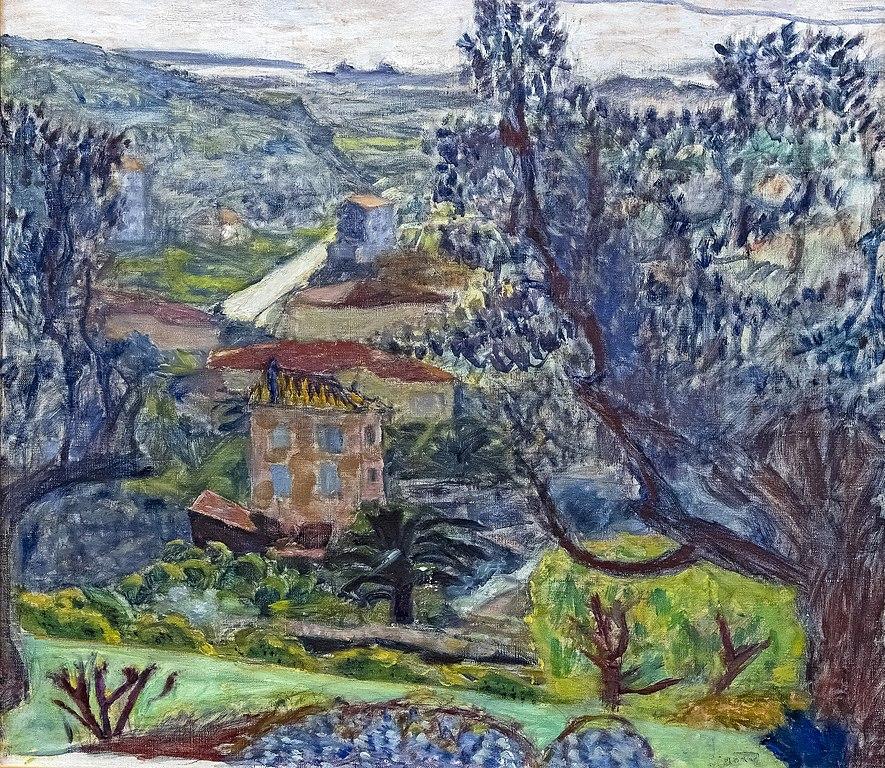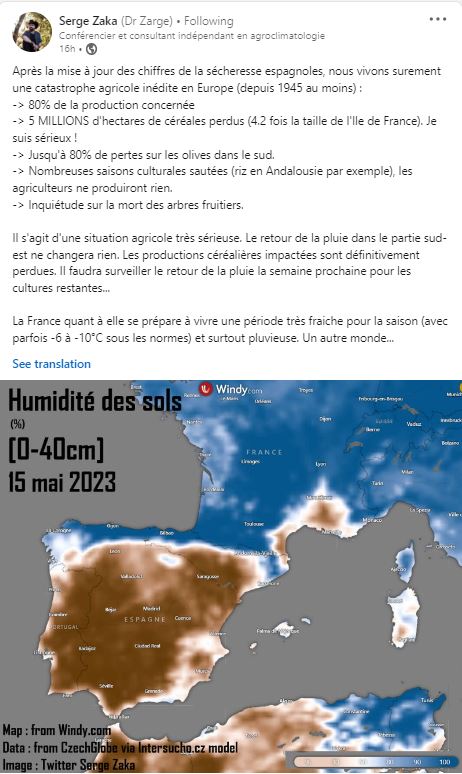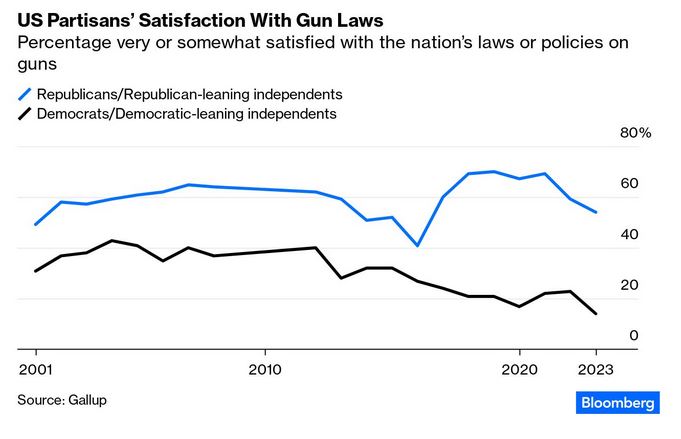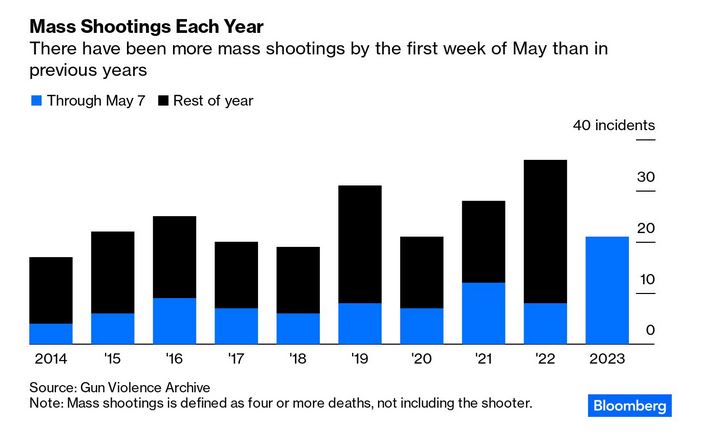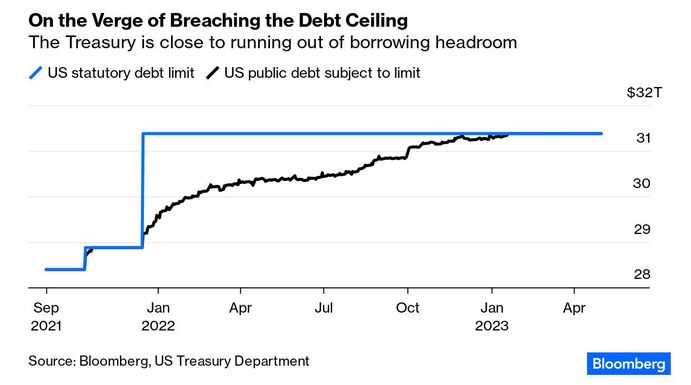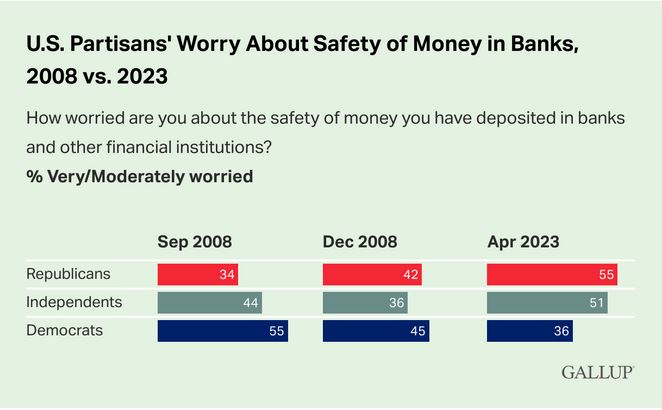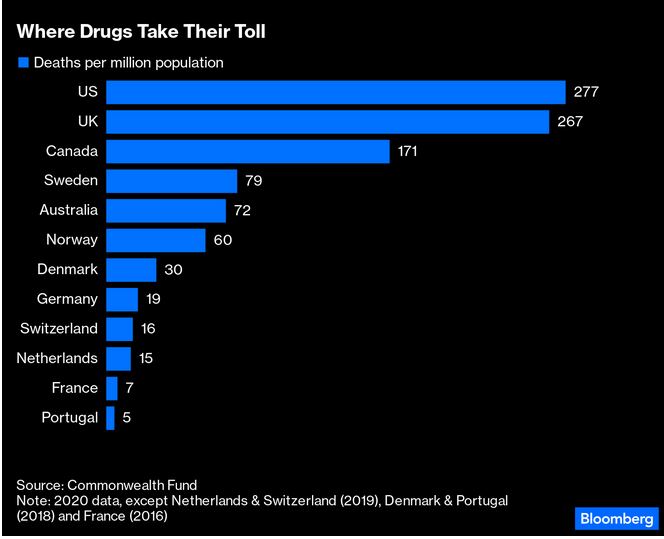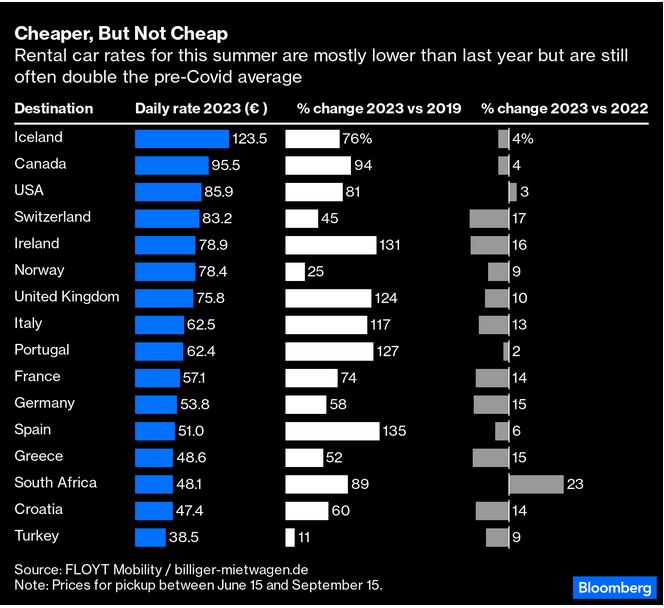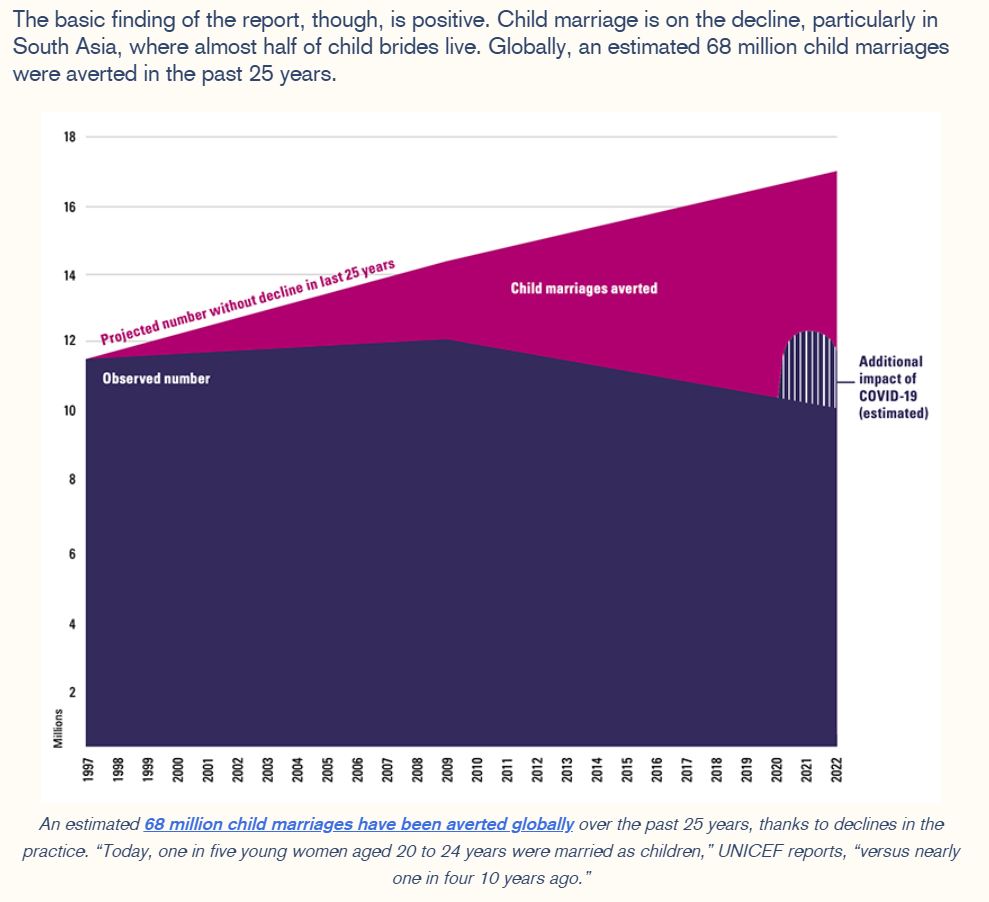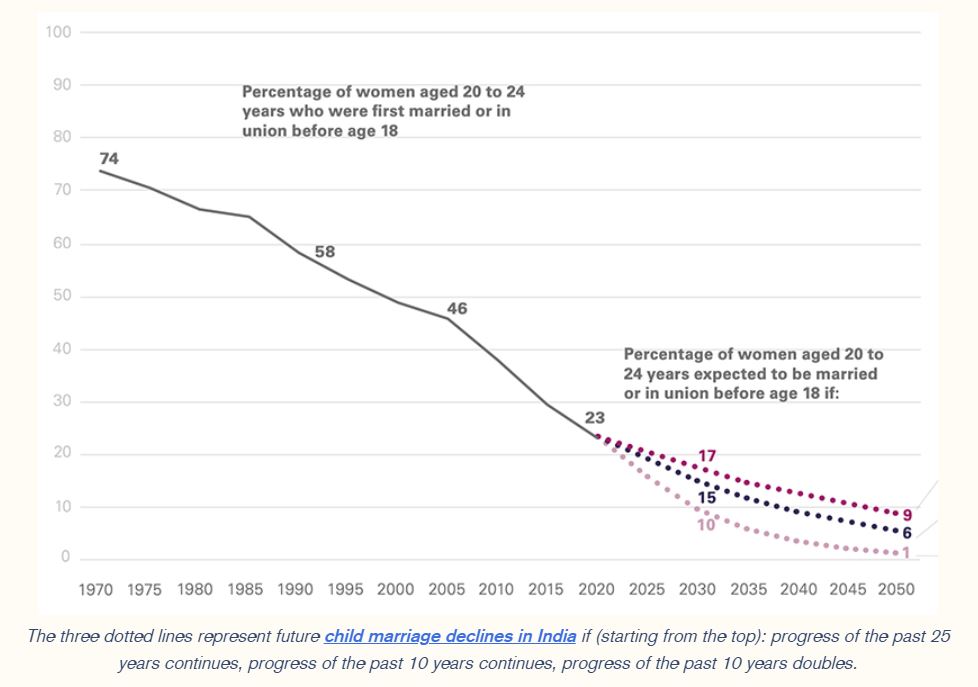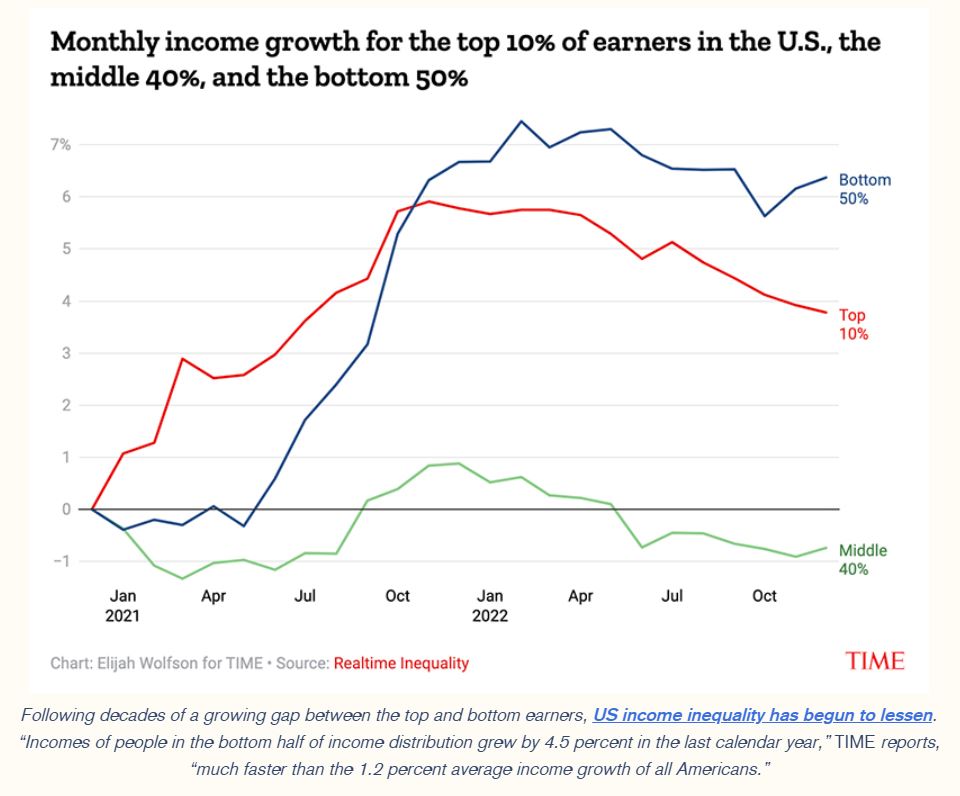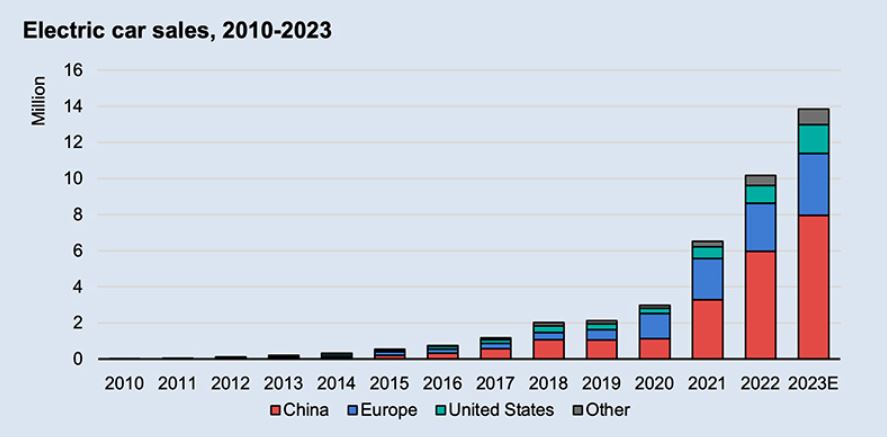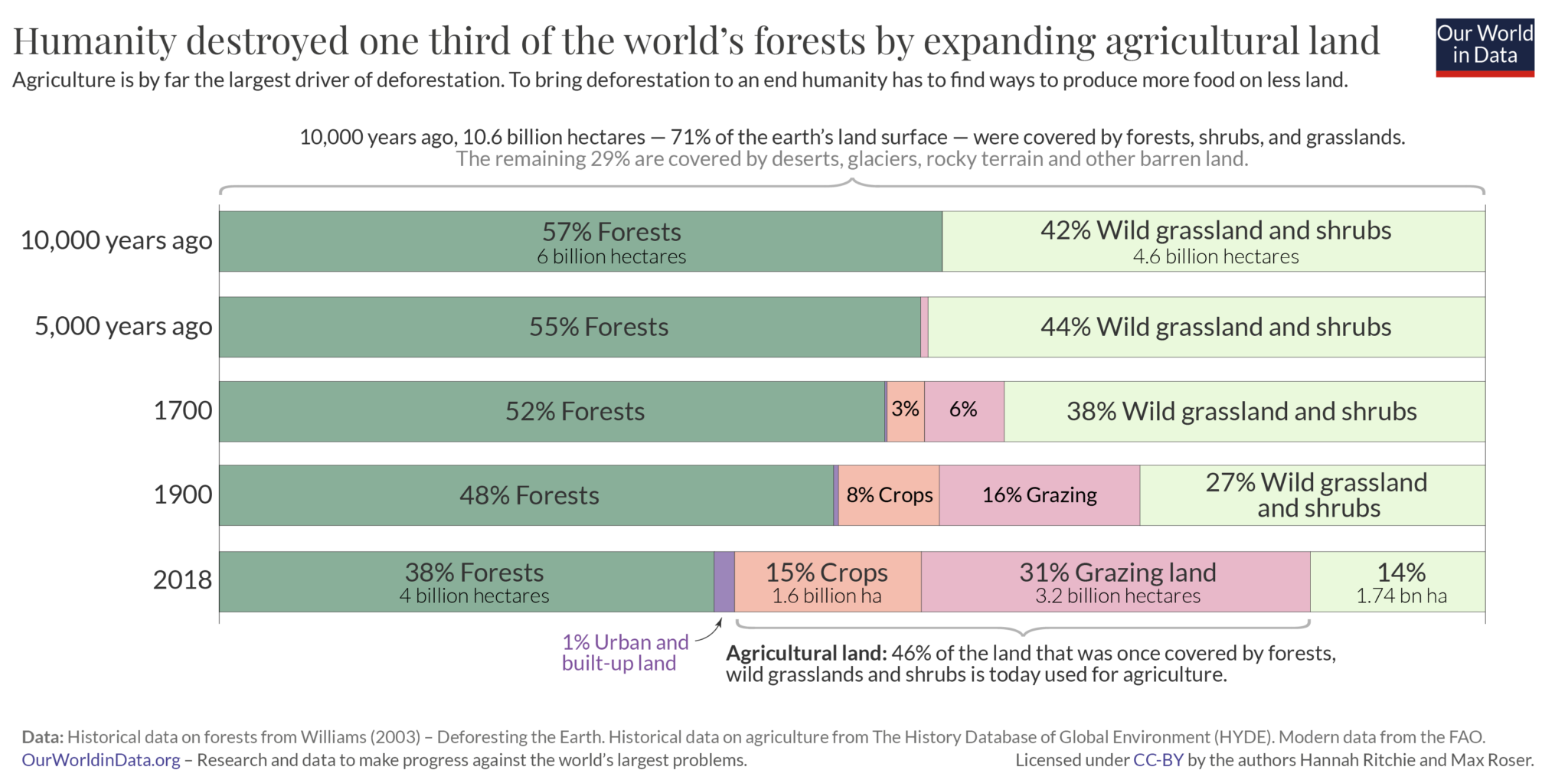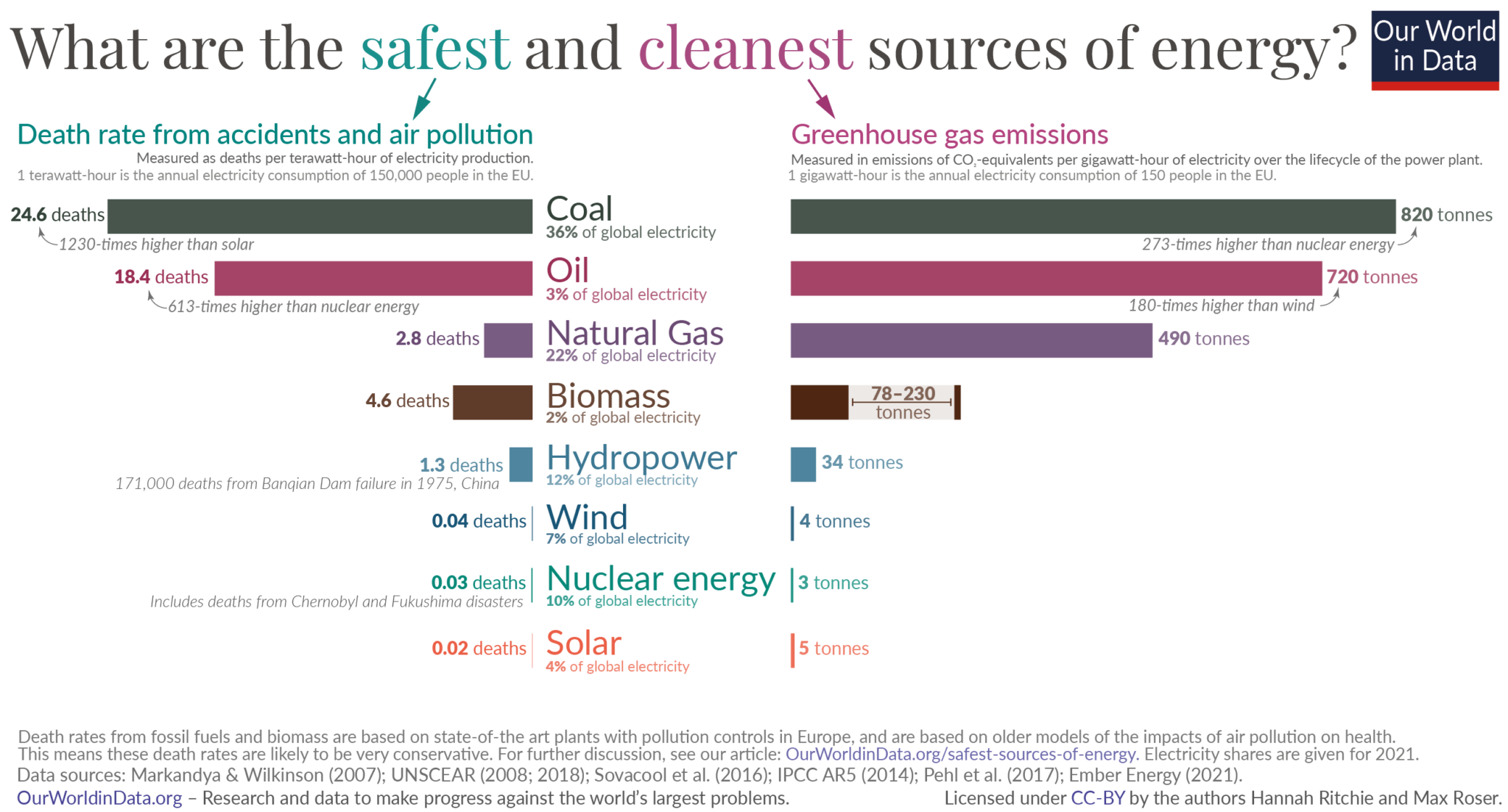|
You
can also view the message online
|
||||||||||||||||||||||||||||||||||
 Châtenay-Malabry (FR - 92290), May 23, 2023 EFITA newsletter / 1071 - European Federation for Information Technology in Agriculture, Food and the Environment The informatique-agricole.org site offers you the possibility of subscribing the RSS feeds of its two newsletters See RSS feeds to implement to ensure that you continue to receive this newsletter To unsubscribe this newsletter, please contact me directely: guy.waksman(a)laposte.net if this link Unsubscribe does not work. 
To correspond with me (GW), please use this address: guy.waksman(a)laposte.net To subscribe the efita newsletter (please ask your friends and colleagues to test this link) Efita Newsletters subscription Avant l’informatique / Before computers Weekly newsletters about ICT in Agriculture in English and French Both newsletters have around 5000 subscribers. >>> Last weekly EFITA Newsletters in English (created in 1999) Efita Newsletters >>> Last weekly AFIA Newsletters in French (created more than 20 years ago in 1997) Afia Newsletters >>> Statistics for the latest efita newsletter >>> Last issue of the afia newsletter >>> Last available satistics for the afia newsletter The Irish Famine Memorial in Dublin: A tribute to the victims of the Great Famine (1845-1849)
Farmer’s Daughter: Tragedies of the past should inform our future, by Amanda Zaluckyj, The Farmer’s Daughter USA, March 17, 2017 Crop failure. Famine. Starvation. For most Americans, these words maintain some meaning, but mostly in a historical context. With an abundant food supply, we hardly recognize the reality of such things, and consider it only something that happens in other parts of the world. Even in 2012, when many farmers suffered through a drought, most consumers likely did not even notice, aside from needing to water their lawns more often. If anything, they may have experienced negligible price increases at the grocery store. But for much of human history, the reality of crop failure, famine, and starvation was front and center, and many significant historical events shaping politics and world governments resulted from food shortages. Of course, with today being St. Patrick’s Day, it is the perfect opportunity to reflect on one of those crop failures that changed the course of history — the Great Potato Famine. .../... While it may seem unimaginable to us, such things do continue to happen in our world today. The potato blight still exists, and potato farmers employ crop protection tools to fight against it. In fact, Simplot’s Innate potato was genetically engineered to be resistant to the blight. Imagine if you told those Irish families facing disease, starvation, and death that we could give them potatoes that would not wilt and die, even if they came into contact with the disease ruining their crops. Sure, they might not exactly understand what we meant by our scientific explanations, but I’m sure the preference would be for the technology over listening to their children scream at night from hunger. Still today, we have people who are food insecure, farmers struggling to protect their crops from pests, and children suffering from diseases. We have the tools, the science, and technology to address these problems, but we have to have the opportunity to do so. Unfortunately, while these problems seem so far removed from our dinner tables, people tend to buy into messages that disparage and hinder our ability to find solutions. We need the naysayers to get out of the way so those solutions have a chance to work. For a very good source and read about the Irish Potato Famine, please visit The History Place (see hereafter). See agdaily.com The Great Hunger (The History Place)
Matinée d’automne (la grande vue de Vernon), circa 1922, par Pierre Bonnard
futurefarming.com > Long coleoptile wheat a game changer for Australian growers A new project will integrate long coleoptile wheat into Australian farming systems. This could be a game changer for growers in low-to-mid rainfall zones. > FIRA USA 2023: more than 15 in-field robot demos The California Rodeo Salinas is set to become a hub of agricultural technology during the 2023 edition of FIRA USA. > Weed control: Savings on resources by spot spraying broad-leaved dock Dutch bulb grower Stef Ruiter in Andijk (The Netherlands) is going into practice with a site-specific approach to broad-leaved dock in grassland. > Field robot: Yanmar starts in France with autonomous spraying robot YV01 Yanmar starts with selling the YV01 autonomous spraying robot in France. Seven robots are sold now. > Carbon credits: The only Australian farmer to ever earn soil carbon credits Niels Olsen is the only Australian farmer that has earned any carbon credits for his soil. > Protein acres: 5 million acres of protein maps using CropScanAg apps With 800 CropScan On Combine Analysers installed, it is estimated that approximately 5 million acres of farmland are being mapped for protein and yield. > Fieldbee-gps: attractive alternative electric steering systeem Fieldbee recently launched the new Powersteer electric steering system. We looked at a set for a first impression. > Ecorobotix: BMW’s largest shareholder invests in Ecorobotix Ecorobotix, to accelerate growth of AI powered plant-by-plant recognition and ultra-high precision smart sprayer system. > Robotic imaging: Robotic imaging for faster corn breeding Make rapid breeding improvements to every aspect of corn. > Autonomous system: Efarm.Pro: autonomous system for demining fields in Ukraine Efarm.Pro develops a demining complex which includes: a drone, a demining robot, an autopilot and a tractor-mounted system capable of withstanding an explosion. >CHCNAV Opens Dealership Opportunities to Precision Ag Professionals CHC Navigation opens dealership opportunities to precision farming professionals worldwide. Be our dealers in your region and grow your precision farming business with the affordable automated steering retrofit kits for tractors. > Tillage: Scientist John Baker: ‘A lot of farmers are doing no-tillage wrongly’ A lot of farmers have experience in no-tillage, but in many cases, they are doing it wrongly. > AgTech sensor startup EnGeniousAg wins $ 1 million award from NSF EnGeniousAg, LLC has received a National Science Foundation Phase II Small Business Innovation Research (SBIR) grant. > Robotic imaging for faster corn breeding Corn is a very valuable crop, but also an intensive crop requiring high amounts of water and nutrients to attain high yields. That’s why for many decades, seed industry and government scientists have been working hard on ways to make rapid breeding improvements to every aspect of the plant. Now it can be done faster. > Intelligent cameras increase efficiency in agriculture Explore how AI-enabled industrial cameras support agriculture by enhancing crop monitoring, increasing yield, and conserving resources. Benefit from this intelligent vision system for effective, eco-friendly farming practices. Find out more about IDS NXT and its user-friendly workflows today. > Funding: Small Robot Company in danger of entering administration Small Robot Company’s lead investor has pulled its funding, leaving the UK company with no runway to continue operations. > Tillage: Scientist John Baker: ‘A lot of farmers are doing no-tillage wrongly’ A lot of farmers have experience in no-tillage, but in many cases, they are doing it wrongly. > Water management: Dutch farmer Klaas Schenk expands water management system Dutch arable farmer Klaas Schenk in Anna-Paulowna, The Netherlands, invested in composite drainage, drip irrigation, an above-ground water reservoir and underground water storage in 2021. > Autonomous system: Efarm.Pro develops autonomous system for demining fields in Ukraine Efarm.Pro develops a demining complex which includes: a drone, a demining robot, an autopilot and a tractor-mounted system capable of withstanding an explosion. > The only Australian farmer to ever earn soil carbon credits Niels Olsen is the only Australian farmer that has earned any carbon credits for his soil. > Harxon GNSS Antennas Facilitate Accurate Filed Robot Operations Harxon provides cost-effective Survey GNSS antenna HX-CSX627A and Ruggedized antenna HX-CVX600A for accurate field robot operations like crop monitoring, soil sampling, weed control and harvesting. These tasks require high precision, reliability and autonomy from field robots. Using high-precision GNSS antennas can help farmers reduce costs, improve efficiency and enhance safety. Contact us for more information! > Autonomous sprayer: John Deere tests autonomous sprayer from GUSS on large orchards in Brazil The autonomous sprayer GUSS is in Brazil to be tested in orange, coffee, grape, and vegetable plantations. > Variable sowing beets: Dutch farmer starts with variable sowing of beets Dutch NPPL participant Daniël Cerfontaine gets to work with variable sugar beet sowing. > Spot spraying: Savings on resources by spot spraying broad-leaved dock Dutch bulb grower Stef Ruiter in Andijk (The Netherlands) is going into practice with a site-specific approach to broad-leaved dock (Rumex obtusifolius) in grassland. > Steering system: Fieldbee-gps: attractive alternative electric steering system Fieldbee recently launched the new Powersteer electric steering system. See futurefarming.com
70% of specialty crop growers now investing in farm robots, says new Western Growers report, AFN, by Jennifer Marston …/… Labor costs and availability issues are driving more investment in automation amongst specialty crop growers, according to a new report from US-based Western Growers Association. Roughly 70% of growers surveyed for the second annual Specialty Crop Automation Report said they had invested in automation in 2022. The average annual spend on automation was $450,000–$500,000 in 2022, up from $350,000–$400,000 the previous year. Growers currently spend the bulk of their investments on weeding robots and those that can assist with harvest. .../... See agfundernews.com Paysage du Cannet, 1923, de Pierre Bonnard The Small Robot Company nearly ‘through the danger zone’ after losing lead investor and launching crowdfunding campaign, AFN, by Jennifer Marston British ag robotics startup Small Robot Company (SRC) says it has a “high degree of confidence” that it’s “through the danger zone” it entered after recently losing its lead investor in a funding round. The company offers what it calls “per plant” intelligence via its small Tom robot that autonomously maps an entire field to detect weeds, pests, compaction and other factors. Its AI intelligence advisor, Wilma, takes data points from Tom and converts them into advice for farmers. Wilma can also predict yields from emergence data, survival rates and tiller counts, says SRC. Another ‘bot, Dick, can autonomously zap weeds and is in field trials for non-chemical weeding. …/… See agfundernews.com Vine-killing bacteria found in Portugal The wine industry is on tenterhooks. Xylella fastidiosa, sub-species fastidiosa, the bacteria responsible for Pierce’s disease, has been discovered in the county of Fundão, in the centre of Portugal. See vitisphere.com Microbes discovered that can digest plastics at low temperatures, by Helena Horton, Environment reporter, in The Guardian .../... Dr Beat Frey, one of the study authors, explained: “Microbes have been shown to produce a wide variety of polymer-degrading enzymes involved in the breakdown of plant cell walls. In particular, plant-pathogenic fungi are often reported to biodegrade polyesters, because of their ability to produce cutinases, which target plastic polymers due their resemblance to the plant polymer cutin.” The scientists only tested the microbes at one temperature, so have not yet found the best one to use. Nevertheless, they say it works well between 4C and 20C. Frey said: “The next big challenge will be to identify the plastic-degrading enzymes produced by the microbial strains and to optimise the process to obtain large amounts of proteins. In addition, further modification of the enzymes might be needed to optimise properties such as protein stability.” .../...
Lawsuit challenging Evian’s ‘carbon neutral’ claims ‘defies science and common sense,’ says Danone, AFN, by Elaine Watson A lawsuit challenging ‘carbon neutral’ claims on bottles of evian spring water “defies science and common sense” and should be thrown out of court, argues brand owner Danone Waters of America. Regulatory affairs experts are closely watching the proposed class action lawsuit* — filed in New York in October 2022 — amid growing scrutiny of ‘green’ claims. In this case, the claim at issue was certified by a high-profile third party: The Carbon Trust. …/… See agfundernews.com Paysage au Cannet, 1928, par Pierre Bonnard
Crazy US Gun Law Mass Shootings are the new normal Absurd Debt Ceiling Are US Banks Safe? Webster’s 1828 Dictionary Would Cost $13,904 Today, by Gale Pooley In 1828, it took a blue-collar worker 400 hours to earn the money to buy a dictionary.
Address the growing urgency of fungal disease in crops More political and public awareness of the plight of the world’s crops when it comes to fungal disease is crucial to stave off a major threat to global food security, by Eva Stukenbrock & Sarah Gurr .../... Because viruses and bacteria dominate as agents of human disease, these microbes have received much more attention than have fungi. Yet in crops, fungi are by far the most important agents of disease. The WHO’s list of fungal pathogens that infect humans is a step towards bringing more attention to this extraordinary but understudied group of microbes. But addressing the greatest threats to food security — and so to human health — must include tending to the devastating impacts fungi are having, and will keep having, on the world’s food supply. See nature.com Paysage Violet, Le Soir, par Pierre Bonnard OpenAI CEO Sam Altman says he’s a ‘little bit scared’ of A.I., by Rohan Goswami, Mar 20 20239 OpenAI CEO Sam Altman said in a recent interview with ABC News that he’s a “little bit scared” of artificial intelligence technology and how it could affect the workforce, elections and the spread of disinformation. OpenAI developed the ChatGPT bot, which creates human-like answers to questions and ignited a new AI craze. But his excitement over the transformative potential of AI technology, which Altman said will eventually reflect “the collective power, and creativity, and will of humanity,” was balanced by his concerns about “authoritarian regimes” developing competing AI technology. “We do worry a lot about authoritarian governments developing this,” Altman said. Overseas governments have already begun to bring competing AI technology to market. Chinese tech company Baidu, for example, recently held a release event for its ChatGPT competitor, a chat AI called Ernie bot. Years before Russia’s invasion of Ukraine, Russian President Vladimir Putin said whoever becomes the leader in AI technology “will be the ruler of the world.” Altman called the comments “chilling.” Both Google and Microsoft have aggressively stepped up their AI plays. Microsoft chose to partner with Altman’s OpenAI to integrate its GPT technology into Bing search. Google parent Alphabet unveiled an internally developed chatbot called Bard AI, to mixed feedback from Google employees and test drivers. The influence of ChatGPT and AI tools like it hasn’t yet reverberated through the American election process, but Altman said the 2024 election was a focus for the company. “I’m particularly worried that these models could be used for large-scale disinformation,” the CEO told ABC. “Now that they’re getting at writing computer code, [models] could be used for offensive cyberattacks,” he said. ChatGPT’s programming prowess has already made a mark on many developers. It already functions as a “co-pilot” for programmers, Altman said, and OpenAI is working toward unlocking a similar functionality for “every profession.” The CEO acknowledged that it would mean many people would lose their jobs but said it would represent an opportunity to come up with a better kind of job. “We can have a much higher quality of life, standard of living,” Altman said. “People need time to update, to react, to get used to this technology.” See cnbc.com Flying Forward: The Future of the Drone Industry, by Haig Kadian While we don't have flying cars, aerial technology is quietly transforming many industries, from e-commerce to medicine. Already, private companies are using drones to deliver emergency supplies, identify crop infestations, and survey construction sites. As the technology advances, drones could soon impact every area of society. See humanprogress.org A New Cloned Horse Offers Hope for Endangered Species The technique may finally be emerging as a way to preserve species at risk of extinction. See wired.com Paysage du Midi, par Pierre Bonnard (1917-1918)
Global economic inequality: what matters most for your living conditions is not who you are, but where you are What is most important for how healthy, wealthy, and educated you are? Your knowledge and how hard you work do matter — but they matter much less than the one factor that is outside anyone’s control: whether you happen to be born into a productive, industrialized economy or not. The huge majority of the world is very poor: almost 4 billion people live on less than $6.70 a day. If you live on $30 a day, you are part of the richest 15% of the world. In this article, we show how vast global income inequality is, and how much it matters for people’s living conditions. We also describe the importance of economic growth and redistribution for reducing inequality and improving living conditions.
Paysage avec montagne, 1924, par Pierre Bonnard How to tackle political polarization Social scientists are seeking strategies for reducing hostility between people who support different political parties. One real-world success story: a joint political advertisement in which the opposing candidates for Utah governor agreed to campaign respectfully. Extreme political polarization has been associated with a rise in support for partisan violence, and some fear it could eventually culminate in the collapse of democracy. “That’s the lurking dark pit that we’re all trying to avoid,” says social psychologist Kurt Gray. See nature.com The molecule that kickstarted life For more than 15 years, scientists have been on a quest: create a functional ‘protoribosome’, a reconstructed version of the protein-building machine that many think might have helped to kickstart life on Earth. The modern ribosome is a key ingredient of life as we know it because it translates genetic information into proteins. At its heart sits a small RNA pocket that some think might be closest to what the very first ribosome looked like. Now, there’s proof that some reconstructed protoribosome-like RNAs can link amino acids — the first step to making proteins. Some scientists say there are other ways for proteins to emerge, without a ribosome. But others are already thinking about repurposing these simple machines to manufacture new kinds of biomolecule. See nature.com Incredible NYC Rent Increases Cheaper Rental Car Rates Child Marriages in South East Asia on the decline up to now Perspective: The pressure on pollinator insects, by Jack DeWitt, 2023 You may have heard that bees in California are fish. In June 2022, a California appeals court ruled that four species of bumblebees are to be categorized as fish, allowing the California Fish and Game Department to put them on the endangered species list. California’s endangered species law, enacted in 1970, calls for special protection for any endangered “bird, mammal, fish, amphibia or reptile,” or in other words, anything with a backbone. So how do you get insects — such as bees — from that definition? Seems the legislators had all seafood in mind, because the law also includes clams, crabs, and lobsters, which have no backbone. Soon, interpreters of the law included a snail, a shrimp, and a crayfish, also backboneless. .../... There is a lot of research indicating a significant decline in insect populations worldwide over the last several decades. An insect trap 36 feet above the ground monitored by the Rothamsted agricultural research station in England for nearly 30 years (1973-2002) showed a decline in total insects trapped of 70 percent. Other long-term studies around the world show similar declines. What is causing the decline? Dave Goulson, an entomologist in England, has written a book about the loss of insects (Silent Earth, Averting the Insect Apocalypse). He discusses several probable causes: Global warming, loss of habitat, loss of food sources due to super-effective weed control, excessive use of nitrogen fertilizers that causes plants to produce more anti-insect toxins, and, of course, pesticides in general, particularly systemics such as the neonics. In other words, so-called industrial farming. He also blames honeybees, which are introduced, for competing with native pollinators for nectar and pollen. I expect few insects will actually go extinct. One thing we can be sure of. If nuclear war destroys civilization, insects will take over the world. See agdaily.com Child Marriages in India: different hypotheses Genetically Engineered Crops Are Key To Sustainable Farming. So Why Are Some Scientists Afraid To Discuss Them? By Henry I. Miller, MS, MD and Colin Carter — April 25, 2023 The ignorance surrounding what agricultural practices are truly "sustainable," even among people and institutions that should know better, is astonishing. The contributions of genetic engineering will be essential. See acsh.org Cultivated meat could emit 25% more CO2e than conventional beef, finds research, in FoodNavigator.com Fresh research out of the University of California, Davis suggests the global warming potential of cultured meat could be between 4-25% higher than regular beef if a highly refined growth medium is used in its production. See foodnavigator.com The Small Robot Company nearly ‘through the danger zone’ after losing lead investor and launching crowdfunding campaign, AFN, by Jennifer Marston See agfundernews.com The Week in AgriFoodTech: GoodLeaf Farms snags $78m, Prime Roots raises $30m, Miso Robotics gets new investment, AFN, by Jennifer Marston See agfundernews.com US income inequality has begun to lessen What Could Go Right? The electric vehicles are coming! Much faster than expected, by Emma Varvaloucas The International Energy Agency (IEA)’s 2023 Global Electric Vehicle Outlook documents a swift uptick in EV sales, which include plug-in hybrids and battery-electric cars: three short years ago, in 2020, only 4 percent of new car sales were EVs. In 2022, 14 percent were. The IEA predicts that in 2023, 18 percent will be, and in 2030, 36 percent.
CRISPR zeroes in on death cap antidote The CRISPR–Cas9 gene-editing tool might have cracked the mystery of how death cap mushrooms (Amanita phalloides) kill — and it led researchers to a potential antidote. Using the gene-editing technology, researchers created a pool of human cells — each with different genetic mutations — and exposed them to the mushrooms’ toxin. The toxin could not enter cells that lacked a functional version of an enzyme called STT3B, and cell survival increased. The researchers then sifted through thousands of chemical compounds to find one that would block the action of STT3B. They uncovered indocyanine green, a dye developed by the photography company Kodak in the 1950s and used in medical imaging. Indocyanine green has not yet been tested as an antidote in humans, but it reduced deaths when given to mice. See nature.com Paysage avec train, avant 1947, par Pierre Bonnard, Hermitage Museum Three climate policies the G7 must adopt This week, the leaders of the Group of Seven (G7) economies — Canada, France, Germany, Italy, Japan, the United Kingdom and the United States, plus the European Union — will assemble in Japan. The group accounts for almost one-third of carbon dioxide emissions from fossil fuels. It also subsidizes oil, coal and gas to the tune of US$63 billion per year, or $62 per person, on average. Economist Edward Barbier outlines a three-part strategy to greening the G7: - Remove market distortions favouring fossil fuels - Foster a more-inclusive version of the Climate Club, its promising plan to spur the introduction of ambitious climate policies - Help developing economies to decarbonize
Paysage du Morvan, circa 1921, par Pierre Bonnard A war on woke, but what else? It is a truism that a political movement debating its reasons for existing knows it’s in trouble. It’s no surprise that the National Conservatism conference held in London this week coincided with the fourteenth year of a Tory government that looks both incompetent and out of ideas, not to mention nearly twenty points behind in the polls. But if the UK Tory party looks dead on its feet, national conservatism, in its various forms, is in rude health across much of Europe. One of the questions facing delegates this week is whether parties in Europe can unite behind a common programme that might allow them to shape politics across the continent. We know who and what its enemies are: globalism, cultural liberalism, immigration, ‘wokeness’ and the rest. National Conservatism is also a natural opponent of the European Union. To allies of Hungary and Poland in their rule of law disputes with the European Commission, EU values embody the worst of liberal internationalism and – the dirtiest of words to conservatives – progressivism. Yet the question of what national conservatism is actually for remains largely unanswered. Conservatism is about conserving what is best about national traditions and institutions, but beyond defending the traditional family, it’s not clear what this movement wants to conserve and what it has to offer that other movements do not. Parties like Fidesz, Law and Justice, and Brothers of Italy and, briefly, Boris Johnson’s Tory party have been successful in tapping into a unique sense of national identity. Giorgia Meloni, for example, has made cracking down on imitation Italian food and drink part of her government’s programme. All of these parties have succeeded in going beyond their traditional conservative base to attract support from blue-collar voters who feel alienated by the left liberalism espoused by socialist parties. But the nationalist conservative movement is full of contradictions. One of the themes at the London conference was that free market capitalism focuses on freedom for the individual and weakens communities. Several speakers pointed to how market capitalism and the high cost of childcare encourages both parents to work full-time, which, in turn, means more unstable families or lower birth rates. It’s hard to argue with this logic. Yet conservatives, particularly those on the libertarian wing, still point overwhelmingly to Ronald Reagan and Margaret Thatcher – the king and queen of market liberalisation – as their ideological heroes. Meanwhile, opposition to ‘wokeness’ – which is also at the heart of the NatCon agenda – is reactionary rather than conservative. Wokeness is also a particularly ill-defined concept. To its opponents, it means ‘cultural Marxism’, ‘critical race theory’ or ‘cancel culture’, a series of vapid slogans which sound suspiciously like conspiracy theory lingo. It is also hard to imagine them ever being debated over the average dinner table. To millions of people, ‘wokeness’ means nothing more sinister than tolerance, a value held by most moderate conservatives. Where the mainstream parties of the centre-right, liberal centre, and the left have gone wrong is in becoming increasingly remote from their voters. However, until national conservatives drop the culture war tropes, they also speak a different language to most voters. See euractiv.com Paysage violet le soir, par Pierre Bonnard
Our Word in Data: technological Change Almost every development that we cover on Our World in Data is underpinned by some form of technological change. Medical innovations contributed to the decline of child mortality and the improvements in life expectancy. The long-term decline of global poverty was primarily driven by increased productivity from technological change. Access to energy, electricity, sanitation, and clean water have transformed the lives of billions. Emerging technologies are often expensive and therefore initially limited to the richest in society. A key part of technological progress is making these life-changing, and often life-saving, innovations affordable for everyone. In many ways, technology has transformed our lives for the better. But these developments are not always positive: many of humanity’s largest threats — such as climate change, nuclear weapons, and potentially also artificial intelligence — are the result of technological advances. To mitigate these risks, good governance can be as important as the technology itself. On our updated page, you can find all our data, visualizations, and writing on many of the most fundamental technological changes that have shaped our world. Why did renewables become so cheap so fast? For the world to transition to low-carbon electricity, energy from these sources needs to be cheaper than electricity from fossil fuels. Fossil fuels dominate the global power supply because, until very recently, electricity from fossil fuels was far cheaper than from renewables. This has changed dramatically in the last decade. In most places in the world today, power from new renewables is cheaper than power from new fossil fuels. The fundamental driver of this change is that renewable energy technologies follow learning curves, which means that with each doubling of their cumulative installed capacity, their price declines by the same fraction. The price of electricity from fossil fuel sources, on the other hand, does not follow a learning curve, meaning renewables will continue getting cheaper relative to fossil fuels. This is an argument for large investments into scaling up renewable technologies now. Increasing installed capacity has the extremely important positive consequence that it drives down the price and thereby makes renewable energy sources more attractive, earlier. Falling energy prices also mean that the real income of people rises. Investments to scale up energy production with cheap electric power from renewable sources are therefore not only an opportunity to reduce emissions, but also to achieve more economic growth — particularly for the poorest places in the world.
The creation of this efita newsletter is sponsored by Acta Digital Services and its distribution by vitisphere.com Please, contribute to the content of your efita newsletter, and advertise your events, new publications, new products and new project in this newsletter. Without your support, it will not survive! Contact: Guy WAKSMAN E-mail: guy.waksman(a)laposte.net To read this newsletter on our web site See Efita The archives of this newsletter See Efita Do not miss the Virus Jokes in English and French About the EFITA mailing list You can use the efita moderated list (> 15000 subscribers) to announce any event / product / web site / joke (!) related to IT in agriculture, environment, food industry and rural areas. If you want to subscribe a friend, please fill in his form. If you do not wish to receive our messages, please fill in the following form... |







